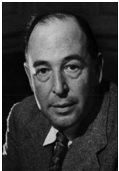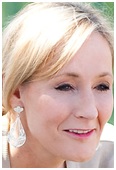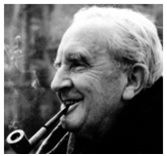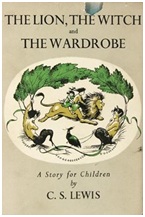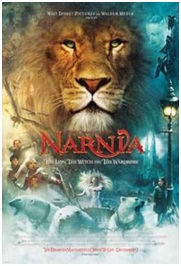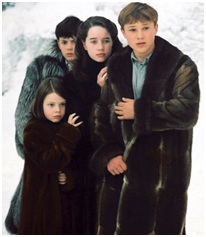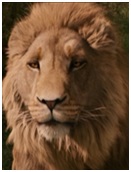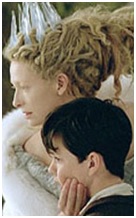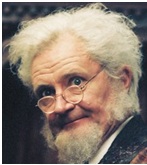|
 |
|
 |
|
|
||
The Lion, the Witch and the Wardrobe - Ethics and Success
The Lion, the Witch and the Wardrobe (1950)
Written by the Northern Irish Oxford theologian, Clive Staples (known as C. S.) Lewis (1898-63), pictured right. The first in a series of seven novels called The Chronicles of Narnia, a big influence on Harry Potter’s writer, J. K. Rowling (pictured right) .
Set in... Narnia, the magical kingdom with lots of animal characters. Fun facts
Key characters Peter, Susan, Edmund and Lucy, the Pevensie chldren. Mr. Tumnus, a faun (a god in the shape of a man). Jadis, the White Witch, the evil Queen of Narnia. Aslan, a lion. Mr. and Mrs. Beaver, two beavers.
The story During the Second World War, four children (Peter, Susan,
Edmund and Lucy Pevensie) are evacuated from London to live with old
Professor Kirke in a large country house. Lucy, the youngest, climbs into a wardrobe and finds it leads into a snow covered land. A faun, Mr Tumnus, tells her it is called Narnia and ruled by the evil White Witch, Jadis, who ensures it is always winter and never Christmas. Father Christmas (Santa Claus) only arrives later in the book to give the children presents to defeat the witch, after her spell is broken. On her return, Lucy fails to convince her brothers and sister about Narnia, because the wardrobe returns to normal. Weeks later she re-enters Narnia, followed by Edmund. He fails to catch up with Lucy, meeting the White Witch who seduces him with magical Turkish Delight and promises of power. She persuades him to bring the other children to her castle. Lucy and Edmund return home. Edmund, annoyed that Lucy was right about Narnia, spitefully tells the others that nothing happened. But Professor Kirke tells them that logic suggests she is telling the truth. Then all four children hide in the wardrobe and find themselves in Narnia. They discover that Mr Tumnus has been captured and are then sheltered by two beavers, Mr and Mrs Beaver, who tell them about:
Edmund runs away to betray the others to the Witch, who forces him to help catch them after slapping him and giving him no more Turkish Delight. But her power is failing and a thaw stops her sleigh. The other children reach Aslan and a petulant Edmund is rescued by them, just as the Witch is about to kill
him. Under an ancient law giving her possession of all traitors, she rightly demands that Edmund is returned to her. Aslan offers himself in Edmund’s place. The Witch accepts, torturing and killing Aslan who comes back to life and finally kills her with the help of:
Aslan persuades Edmund to tell his brothers and sisters that he's sorry, and they forgive him.
Lessons for ethics and success
1. Self-sacrifice is special To save Edmund, Aslan (representing Jesus):
After rising from the dead, he kills the Witch, so destroying the evil she represents. 2. Forgive and forget Aslan and the other children forgive their betrayal by Edmund, particularly because he is so sorry for what he did. The four children are pictured right in the 2005 film.
3. Always strive to be a better person Edmund turns himself from a spiteful traitor into a brave hero who helps to kill the Witch and realizes how foolish he was to assist her. In Narnia the children learn the importance of:
4. Courage is cool Great physical and moral courage is shown by:
5. Greed isn’t good The Witch wins over Edmund by giving him lots of magical Turkish Delight which he becomes obsessed with. This symbolizes Adam’s eating of the apple (and so disobeying God) in the Garden of Eden. The Witch (Tilda Swinton) and Edmund (Skandar Keynes) are pictured right in the film.
6. Make up your own mind Edmund only becomes a better person when he:
7. Have faith in people you trust Professor Kirke (Jim Broadbent, pictured right in the film) is the only person to believe Lucy’s story about Narnia, because he trusts her honesty. He tells Peter and Susan any decision must be based on what :
8. Friendship is fantastic The children are helped by selfless and kind friends like:
Key quote on religion There are only three possibilities. Either your sister is telling lies or she is mad, or she is telling the truth, Professor Kirke’s reason to Peter and Susan why they should believe Lucy’s story about Narnia. C. S. Lewis used the same argument to support a belief in Jesus in his book, Mere Christianity.
Key quote on life If things are real, they're there all the time, Peter
Two literature websites to recommend 1. sparknotes.com 2. litcharts.com
|
|
|
||
|
|
||
| Copyright © wisdomtowin.com 2025 All Rights Reserved | ||
|


